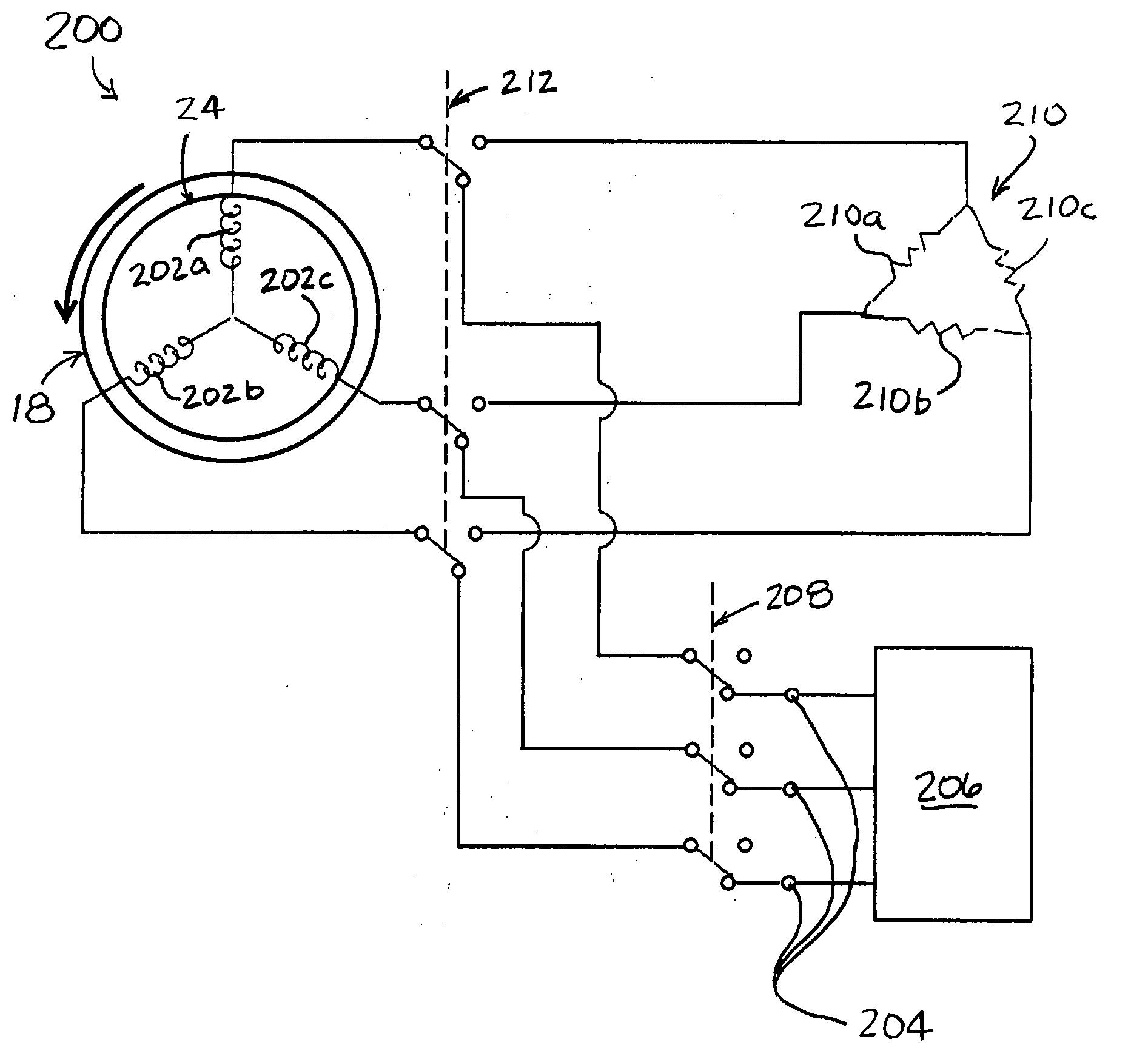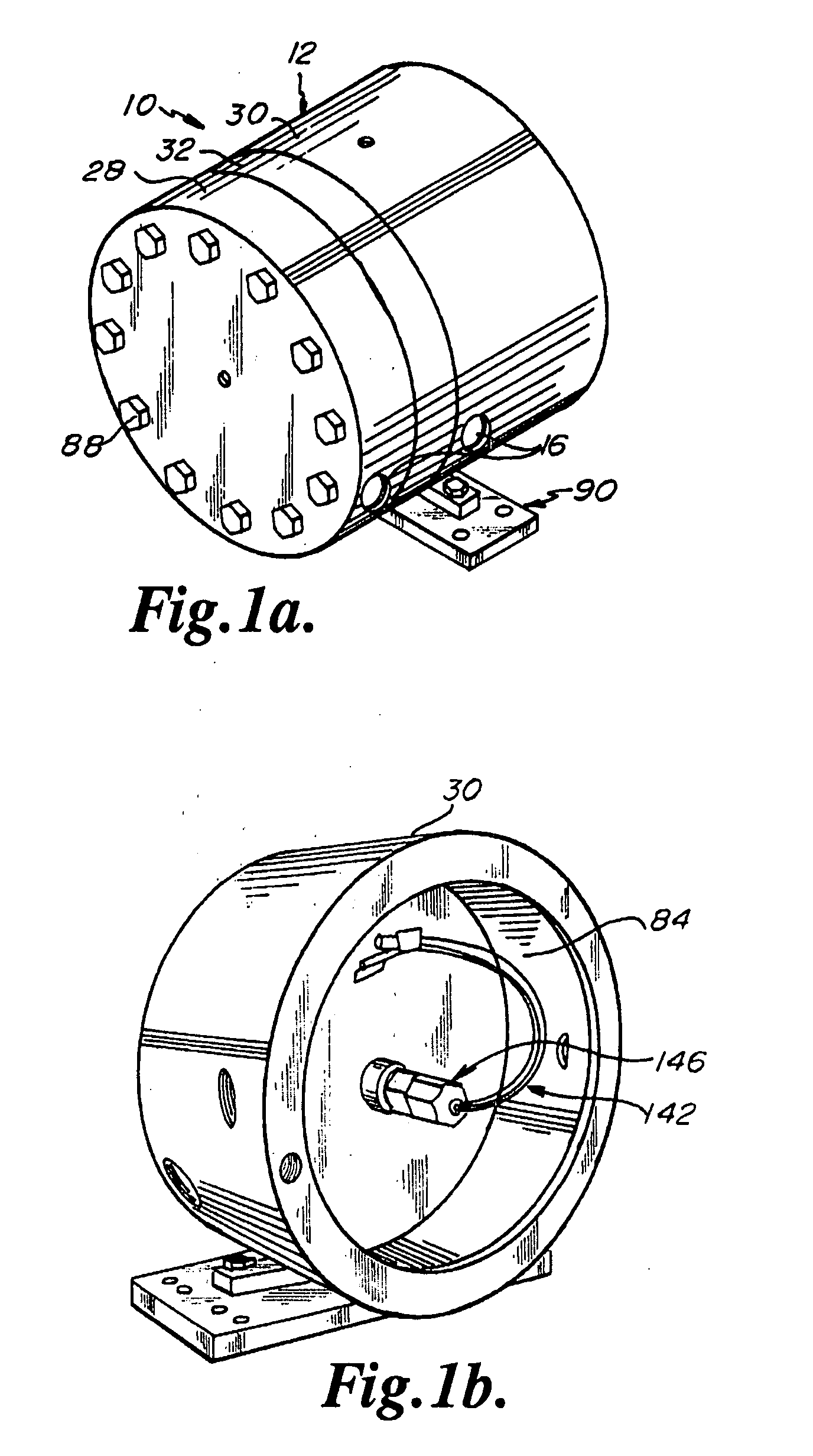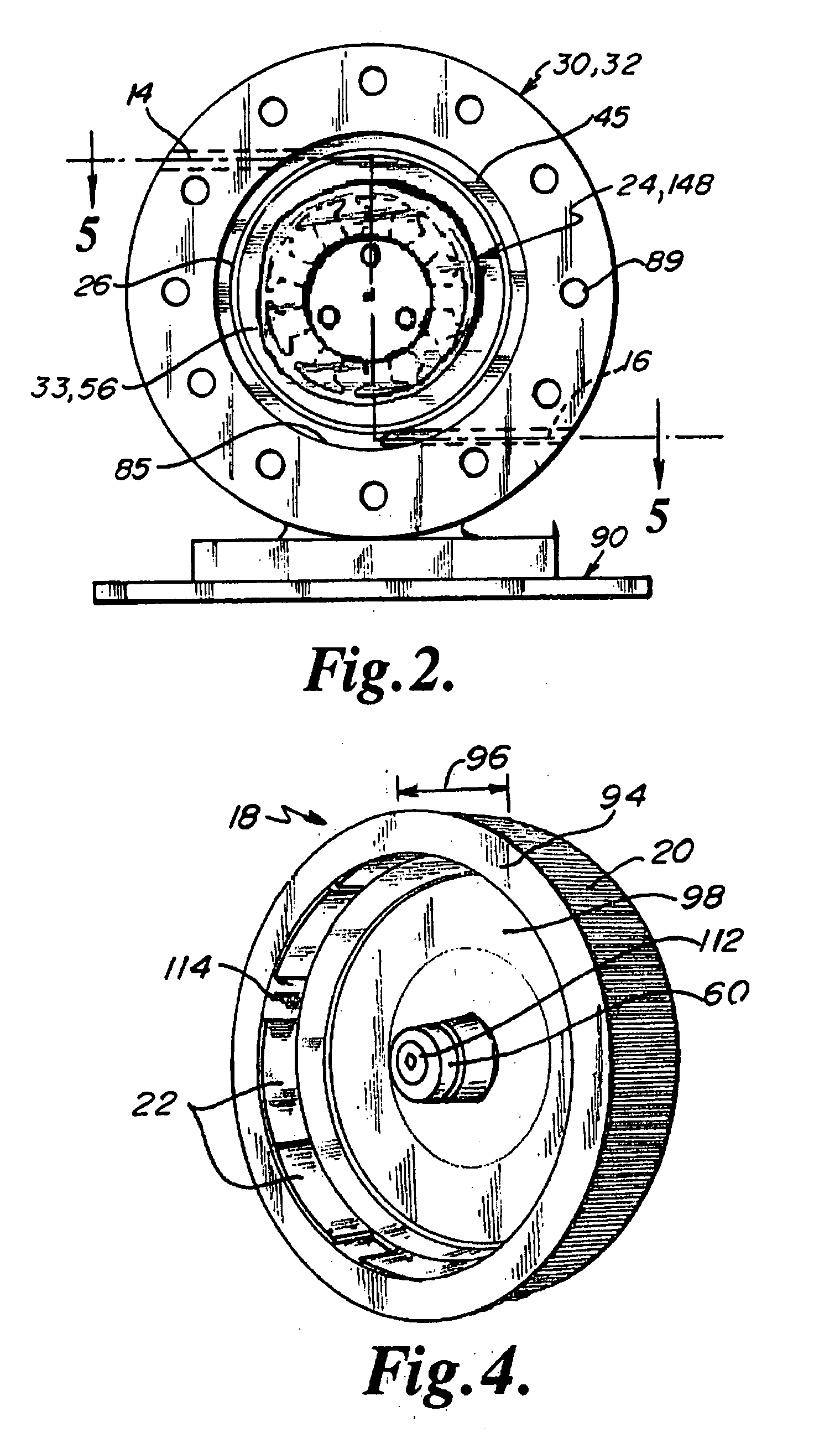Turbine generator
a generator and turbine technology, applied in the direction of motor/generator/converter stopper, fluid coupling, dynamo-electric converter control, etc., can solve the problems of large footprint, explosion hazards, and high voltage levels, and achieve the effect of reducing the explosion hazards, reducing the carbon bridging between connections, and increasing the electrical generation capacity
- Summary
- Abstract
- Description
- Claims
- Application Information
AI Technical Summary
Benefits of technology
Problems solved by technology
Method used
Image
Examples
Embodiment Construction
[0047]Referring to the FIGS. 1 through 7, a turbine generator 10 including a housing 12 with an inlet passage 14 and a pair of fluid outlet passages 16 is depicted in an embodiment of the invention. In this embodiment, a rotor 18 having a continuous impingement surface 20 and a magnetic element 22 attached to the rotor 18 is disposed in the housing 12. The rotor 18 may be configured to substantially surround a core assembly 24. The continuous impingement surface 20 may be characterized by a roughened or structured surface such as a saw-tooth profile. A flow restricting device 26 such as a nozzle ring may be fixed in the housing 12 about the rotor 18.
[0048]The housing 12 may include a front housing portion 28 and a back housing portion 30 separated by a spacer ring 32 that combine to form an interior chamber 33 in fluid communication with the inlet passage 14 and the outlet passages 16. The front housing portion 28 includes a flange 34 in which one of the fluid outlet passages 16 may...
PUM
 Login to View More
Login to View More Abstract
Description
Claims
Application Information
 Login to View More
Login to View More - R&D
- Intellectual Property
- Life Sciences
- Materials
- Tech Scout
- Unparalleled Data Quality
- Higher Quality Content
- 60% Fewer Hallucinations
Browse by: Latest US Patents, China's latest patents, Technical Efficacy Thesaurus, Application Domain, Technology Topic, Popular Technical Reports.
© 2025 PatSnap. All rights reserved.Legal|Privacy policy|Modern Slavery Act Transparency Statement|Sitemap|About US| Contact US: help@patsnap.com



